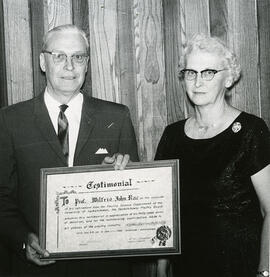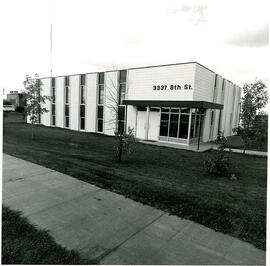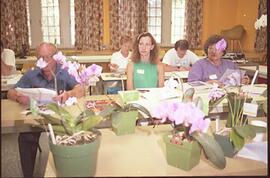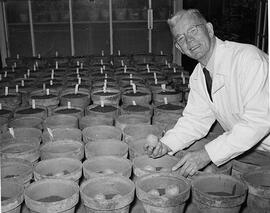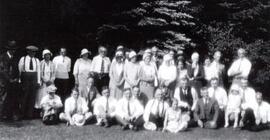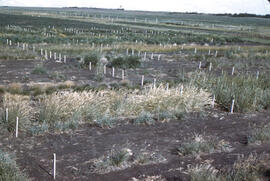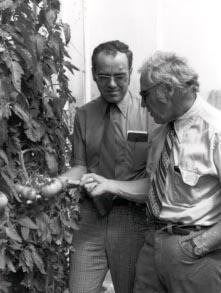Dr. Cecil F. Patterson, head, Department of Horticulture, holding a potato and standing near many pots which contain dirt and potatoes.
Bio/Historical Note: Born in 1892 at Watford, Ontario, Dr. Cecil Frederick Patterson graduated from the Ontario Agricultural College with a BSc in Agriculture. He then took his MA and PhD at Urbana, Illinois. He came to the University of Saskatchewan in 1921 as a lecturer in horticulture. In the following year, a Department of Horticulture was organized, and plans laid for a program of fruit variety testing and fruit breeding. In his thirty-nine years as head of the Department of Horticulture, Dr. Patterson was responsible for the introduction of more than thirty new varieties of hardy fruits, including apples, pears, plums, cherries, raspberries and strawberries. He was also responsible for an improved potato variety, well adapted to prairie growing conditions. In the realm of floriculture, his name became synonymous with a collection of lily varieties in pink, white, rose and other colours - the result of twenty years of patient crossing and selection. Other flower introductions included geraniums and gladioli. Dr. Patterson was a charter member of the Agricultural Institute of Canada, a Fellow of the American Society for the Advancement of Science, a charter member of the Western Canadian Society for Horticulture, and an honorary life member of the Saskatchewan Horticultural Societies Association. Cecil Patterson died in 1961. He was posthumously inducted into the Saskatchewan Agriculture Hall of Fame in 1973. The Patterson Garden, an arboretum on campus, was named in his honour in 1969.



